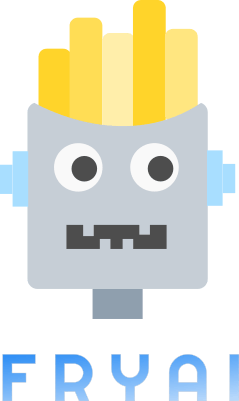- FryAI
- Posts
- Sora gets exposed...
Sora gets exposed...

Good morning, and happy Monday! Let’s start this week off right by exploring the latest in AI together. 😁
🤯 MYSTERY AI LINK 🤯
(The mystery link can lead to ANYTHING AI-related: tools, memes, articles, videos, and more…)
Today’s Menu
Appetizer: Artists expose OpenAI’s Sora model 🎥
Entrée: Alibaba’s new AI model reasons better than OpenAI’s o1-preview 🧠
Dessert: Can chatbots screen for cancer? 💬
🔨 AI TOOLS OF THE DAY
🎁 Gift Ideas: Find the perfect gift for anyone. → Check it out
🤬 Insta Personality: Get a hilarious roast of your Instagram profile. → Check it out
🗣️ VoiceChange: Transform your voice to sound like fictional characters or celebrities. → Check it out
ARTISTS EXPOSE OPENAI’S SORA MODEL 🎥
Q: What kind of shoes do artists wear?
A: Sketchers. 👟
What happened? OpenAI’s Sora video creation model was temporarily leaked by a group of angry artists, part of a beta program to provide materials and feedback to help improve the model.
Why? The artists, who were granted early access to test Sora, accused OpenAI of exploiting their work for “art washing” and “PR” rather than genuine collaboration. In a letter titled “Dear Corporate AI Overlords,” the artists expressed frustration over unpaid labor provided to a $150 billion company. They alleged that while they contributed feedback, bug testing, and experimental creations, OpenAI offered minimal compensation—only showcasing select works for promotional purposes. The group clarified they weren’t against AI in art but criticized OpenAI’s restrictive approval process for sharing their creations and the lack of meaningful artist support. The artists urged peers to explore open-source tools and advocate for fair compensation and creative freedom in AI development. OpenAI has now paused the program, stating their commitment to balancing creativity with safety.
“We received access to Sora with the promise to be early testers, red teamers and creative partners. However, we believe instead we are being lured into ‘art washing’ to tell the world that Sora is a useful tool for artists … We are sharing this to the world in the hopes that OpenAI becomes more open, more artist-friendly and supports the arts beyond PR stunts.”
ALIBABA’S NEW AI MODEL REASONS BETTER THAN OPENAI’S O1-PREVIEW 🧠
Q: Why was the brain so upset?
A: It was on its last nerve. 😡
What’s new? Chinese tech giant Alibaba has introduced QwQ-32B-Preview, an AI model designed to tackle complex logic and math problems.
Want the details? Boasting 32.5 billion parameters, the model can handle prompts up to 32,000 words and performs impressively on benchmarks like AIME and MATH, outperforming OpenAI’s o1-preview and o1-mini models in certain areas. Unlike many AI systems, QwQ-32B-Preview fact-checks itself, a feature that enhances accuracy but slows response times. It reasons through tasks by planning and executing steps, much like OpenAI’s o1 model. Available on Hugging Face under a permissive Apache 2.0 license, it’s the first high-performing reasoning model of its kind to allow for commercial use. However, QwQ-32B-Preview reflects the limitations of AI under China’s strict regulations. It avoids politically sensitive topics and aligns responses with government perspectives, raising questions about its openness and potential for spreading propaganda.
CAN CHATBOTS SCREEN FOR CANCER? 💬
I played hide and seek in the hospital, but they kept finding me in the ICU. 👁️
What’s new? The BRIDGE trial, conducted by Huntsman Cancer Institute and NYU Langone, found that chatbots might serve as a viable alternative to traditional genetic counseling to identify inherited cancers.
Why? Inherited genetic changes cause about 10% of cancers, yet many at risk remain unaware. Genetic counseling now screens for over 100 genes, but the demand for this counseling has outpaced available specialists.
What was the study? The study involved over 3,000 participants at high risk for inherited cancers. One group followed traditional counseling methods, while the other used a chatbot via a patient portal for education and guidance. The chatbot delivered results comparable to in-person counseling.
“Our goal wasn’t to see if the chatbot was better or worse. We wanted to determine if this was another viable model for delivering genetic services. For many, the chatbot provided enough information.”
MONEY MONDAY 🤑
People are discovering innovative (and sometimes wacky) ways to make money using AI. Check out today’s featured video:
HAS AI REACHED SINGULARITY? CHECK OUT THE FRY METER BELOW:
What do ya think of this latest newsletter? |


